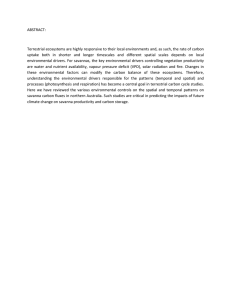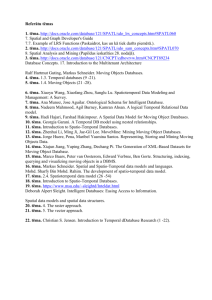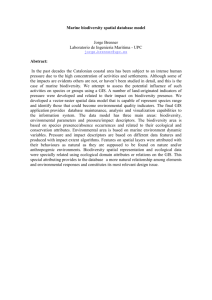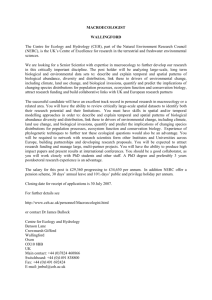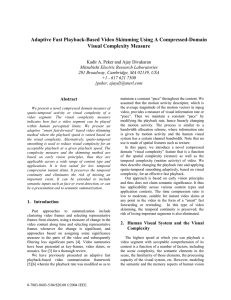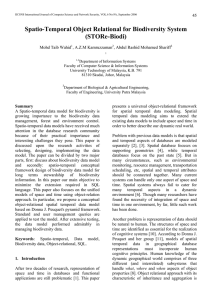IJCSNS September 30, 2006 Computer Science
advertisement
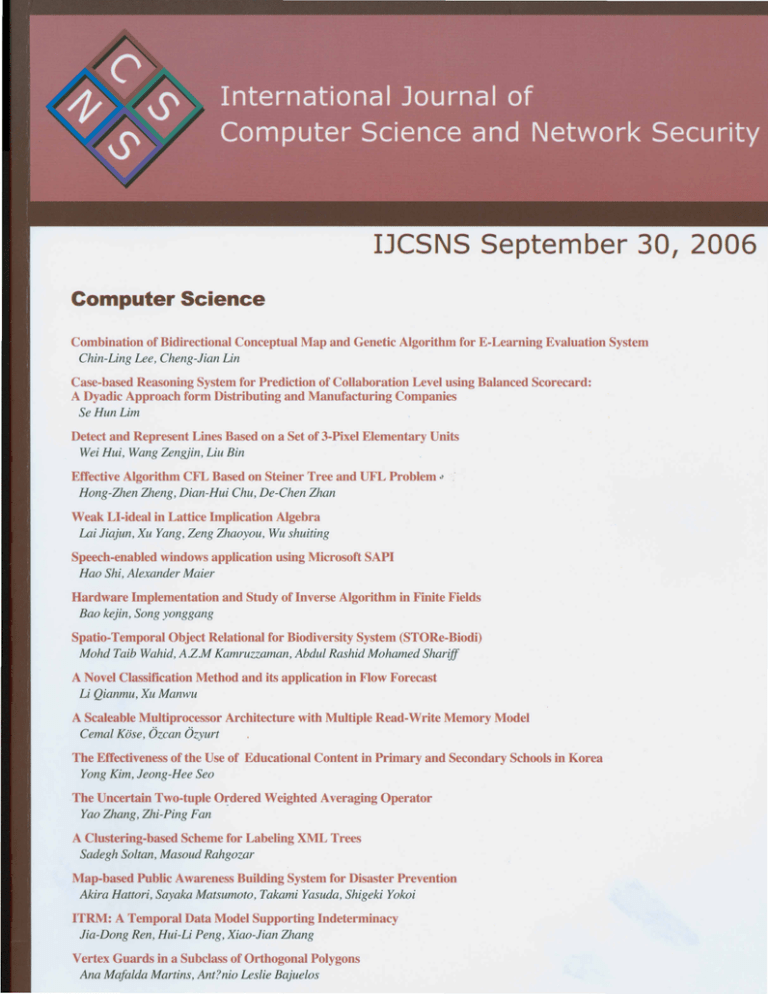
IJCSNS September 30, 2006 Computer Science Combination of Bidirectional Conceptual Map and Genetic Algorithm for E-Learning Chin-Ling Lee, Cheng-Jian Lin Evaluation Case-based Reasoning System for Prediction of Collaboration Level using Balanced Scorecard: A Dyadic Approach form Distributing and Manufacturing Companies Se HunLim Detect and Represent Lines Based on a Set of 3-Pixel Elementary Wei Hui, Wang Zengjin, Liu Bin Units Effective Algorithm CFL Based on Steiner Tree and UFL Problem ~ Hong-Zhen Zheng, Dian-Hui Chu, De-Chen Zhan Weak LI-ideal in Lattice Implication Algebra Lai Jiajun, Xu Yang, Zeng Zhaoyou, Wu shuiting Speech-enabled windows application using Microsoft SAPI Hao Shi, Alexander Maier Hardware Implementation Bao kejin, Song yonggang and Study of Inverse Algorithm in Finite Fields Spatio-Temporal Object Relational for Biodiversity System (STORe-Biodi) Mohd Taib Wahid, AZM Kamruzzaman, Abdul Rashid Mohamed Shariff A Novel Classification Method and its application in Flow Forecast Li Qianmu, Xu Manwu A Scaleable Multiprocessor Architecture Cemal Kose, Ozcan Ozyurt with Multiple Read-Write The Effectiveness of the Use of Educational Yong Kim, Jeong-Hee Seo Memory Model Content in Primary and Secondary Schools in Korea The Uncertain Two-tuple Ol.'dered Weighted Averaging Operator Yao Zhang, Zhi-Ping Fan A Clustering-based Scheme for Labeling XML Trees Sadegh Soltan, Masoud Rahgozar Map-based Public Awareness Building System for Disaster Prevention Akira Hattori, Sayaka Matsumoto, Takami Yasuda, Shigeki Yokoi ITRM: A Temporal Data Model Supporting Indeterminacy Jia-Dong Ren, Hui-Li Peng, Xiao-Jian Zhang Vertex Guards in a Subclass of Orthogonal Polygons Ana Mafalda Martins, Ant?nio Leslie Bajuelos System Spatio- Temporal Object Relational for Biodiversity System (STORe- Biodi) Mohd Taib Wahid1, A.Z.M Kamruzzaman2, Abdul Rashid Mohamed Shariff3 Itaib@fsksm.utm.my,2akzaman@siswa.utm.my,3rashid@eng.upm.edu.my 1,2Departmentof Information Systems Faculty of Computer Science & Information Systems University Technology of Malaysia, K.B. 791 81310 Skudai, Johor, Malaysia Tel: (607)-5532422, Fax: (607) 5565044 3Departmentof Biological & Agricultural Engineering, Faculty of Engineering, University Putra Malaysia Tel: (603)-89466414, Fax: (603)-89466425 lImmary Spatio-temporal data model for biodiversity is 'owing importance to the biodiversity data anagement, forest and environment control. Datio-temporal data models have received much tention in the database research community ~cause of their practical importance and teresting challenges they pose. This paper is scussed upon the research activities of 'lecting, designing, implementing the data odel. The paper can be divided by two major lrts, fIrst: discuss about biodiversity data model ld secondly: spatio-temporal conceptual amework design of biodiversity data model for ng terms stewardship of biodiversity formation. In this paper our main objective to inimize the extension required in SQL guage. This paper also focuses on the unifIed ode1s of space and time using object-relation ~proach.In particular, we propose a conceptual Dject-relational spatial temporal data model lsed on Donna J. Peuquet's pyramid framework. ndard and user management queries are ~pliedto test the model. After extensive testing, e data model performed admirably in anaging biodiversity data. 'eywords: Spatio-temporal, Data model, odiversity data, Object-relational, SQL. fier two decades of research, representation of ace and time in databases and functional plications are still problematic [1]. This paper presents a universal object-relational framework for spatial temporal data modeling. Spatial temporal data modeling aims to extend the existing data models to include space and time in order to better describe our dynamic real world. Problem with previous data models is that spatial and temporal aspects of databases are modeled separately [2], [3]. Spatial database focuses on supporting geometries [4], while temporal databases focus on the past state [5]. But in many circumstances, such as environmental monitoring, resource management, transportation scheduling, etc, spatial and temporal attributes should be connected together. Many current systems can handle only one aspect of space and time. Spatial systems always fail to cater for many temporal aspects in a dynamic environment [6]. Though many researchers have found the necessity of integration of space and time in one environment, by far, little such work has been done. Another problem is representation of data should be natural to human. The structures of space and time are identifIed as essential for the realization of cognitive systems [10]. According to Donna J. Peuquet and her group [11], models of spatial temporal data in geographical database representations must incorporate human cognitive principles. Human knowledge of the dynamic geographical world comprises of three different (and interrelated) subsystems that handle what, where and when aspects of object properties [8]. Object relational approach with its characteristic of inheritance and aggregation is

